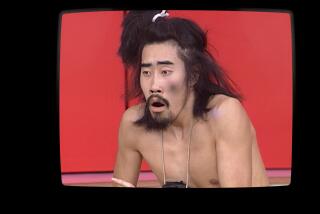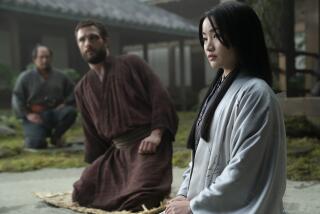‘The Changeling’ by Kenzaburo Oe
The Changeling
A Novel
Kenzaburo Oe
Translated from the Japanese
by Deborah Boehm
Grove Press: 468 pp., $26
When Kenzaburo Oe won the Nobel Prize for literature in 1994, he made a startling claim: Henceforth, he would abandon the autobiographical style that had previously characterized his work. The fruit of that declaration, a sprawling novel about religious sects and nuclear catastrophe called “Somersault,” was published in English translation in 2003 to widespread criticism. Although Oe had lost none of his ambition to explore Japan’s complex quest for a postwar identity, the characters were hollow, the plot was middling and the few rewards were lost among the muddle of the book.
Oe’s next novel, “The Changeling,” has just come out in English, and it offers evidence that the Japanese master has regained his footing. The first volume of a trilogy, it finds Oe maintaining the stripped-down, third-person prose he adopted in “Somersault” while returning to the autobiographical sources that have, for decades, served him well. Chatty and casually indulging in cliché, the narration at times feels closer to the minimalism of Haruki Murakami than to Oe’s once ostentatious prose. But “The Changeling” is not a bland novel -- far from it. It is a richly imagined, complex story full of the oddity, irony and existential angst that have long been at the heart of Oe’s writing, only here they are seen more often on the level of plot and structure than on that of sentence and image.
The book begins with the suicide of a filmmaker named Goro Hanawa, the best friend of novelist Kogito Choko. Kogito learns of Goro’s death after listening to an audiotape his friend has recorded for him. On the tape, Goro says, “So anyway, that’s it for today -- I’m going to head over to the Other Side now.” Then there is a “loud thud.” Later in the night, Kogito’s wife, Chikashi (who is also Goro’s sister), wakes him and conveys the news that Goro has leaped to his death.
“The Changeling’s” initial chapters deal with Kogito’s response to his friend’s death. Goro was a successful director and outwardly happy; the only clue that he might have been contemplating suicide are the 40 tapes he sent to Kogito just before he died. Naturally, Kogito turns to them for answers. What he finds is a rambling series of discourses on everything from the friendship they’ve shared since they were teens in the 1950s to Goro’s ideas about art and life, their shared admiration for Rimbaud and a few secrets from the past.
Kogito discovers that he can have a sort of conversation with Goro by listening to the tapes, pausing them and interjecting his own thoughts. Quickly, he becomes addicted -- to the detriment of his marriage. In hopes of moving on, he “quarantines” himself by accepting an invitation to a film festival in Berlin.
It’s here that “The Changeling” begins to digress in interesting ways, resembling the layered, recapitulating structures found in Oe’s best work. In Berlin, Kogito mulls over his history, and “The Changeling” exchanges its present-day, straightforward narrative for one more akin to the workings of memory. In this broad middle, story piles on story, many beginning with openings such as “One day, Kogito got a call from Goro,” while never making clear when or where these events took place.
As Oe moves among these dreamlike sub-stories, he suggests connections between unanswered questions from each character’s past. Did Goro’s death have anything to do with an assault perpetrated on him by the Yakuza? Why does Kogito remain fixated on a Kafkaesque punishment he has suffered: Three times, men pull him into an alley, remove his left shoe and drop a small but heavy cannonball on his foot, causing him to black out. And what does it mean that these reminiscences keep pulling Kogito closer to an incident that occurred in 1952, when he and Goro were lured by an ultranationalist sect into a plot against the American occupation of Japan?
Oe’s achievement in “The Changeling” is to yoke a wide and occasionally surreal array of elements into a deep exploration of how two men with little in common remained lifelong confidants. Though Goro and Kogito lack vitality as characters -- this is a book more concerned with the mechanics of friendship than with the people of whom a friendship is composed -- Oe’s cerebral, analytical prose is continually engrossing as it follows the ever-forking paths of their relationship.
“The Changeling” strongly evokes the author’s 1967 novel, “The Silent Cry,” which also began with a suicide and then combined themes of Japanese nationalism, postwar occupation, city versus country and a left-behind friend’s quest for answers. In this latest novel, Oe’s examination of Japan’s uneasy coexistence with nationalism is not as penetrating, but his understanding of relationships and art has grown deeper and more nuanced, and his narrative technique has blossomed in a new and satisfying way.
Esposito edits the Quarterly Conversation, a web magazine of book reviews and essays.
More to Read
Sign up for our Book Club newsletter
Get the latest news, events and more from the Los Angeles Times Book Club, and help us get L.A. reading and talking.
You may occasionally receive promotional content from the Los Angeles Times.







